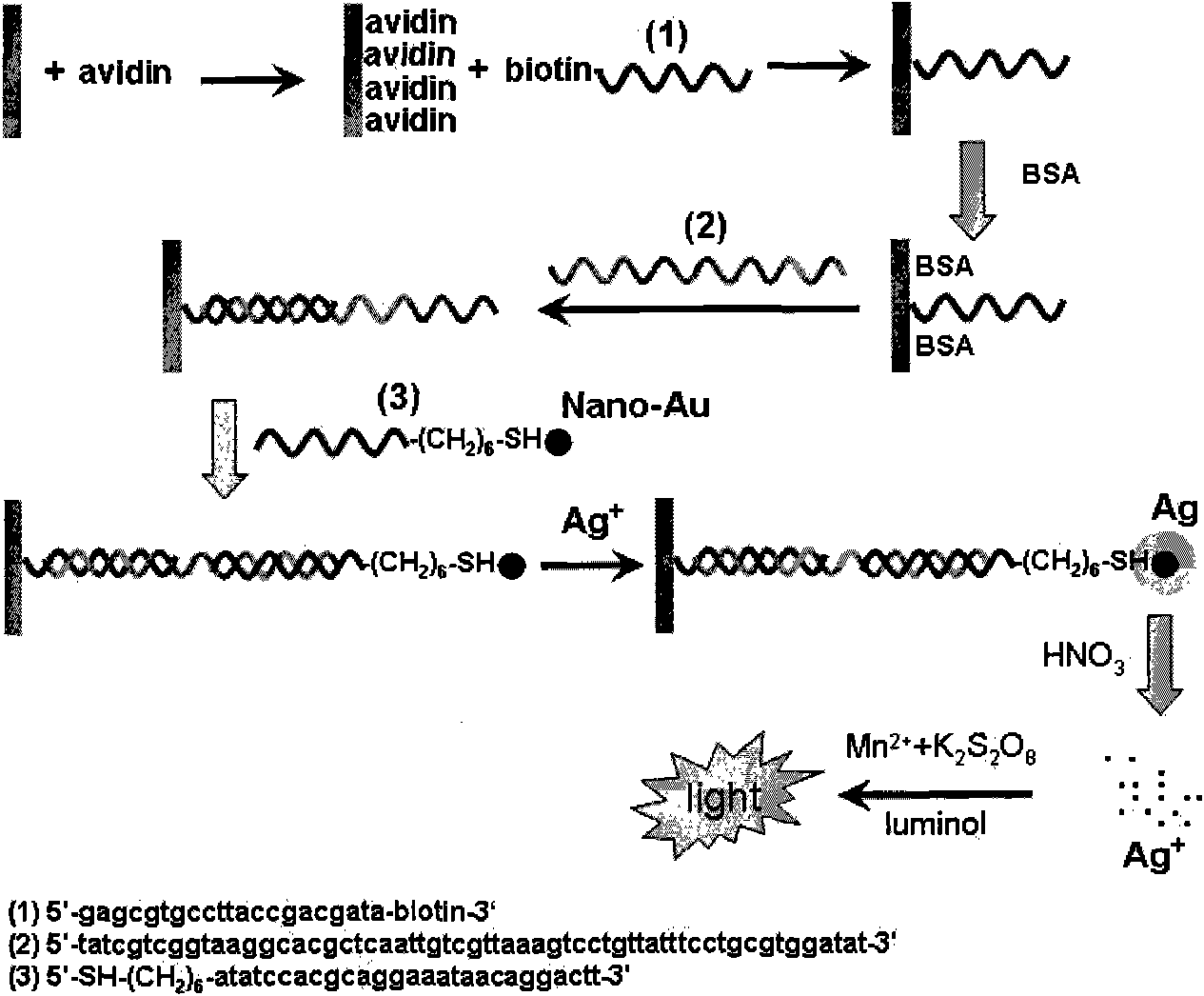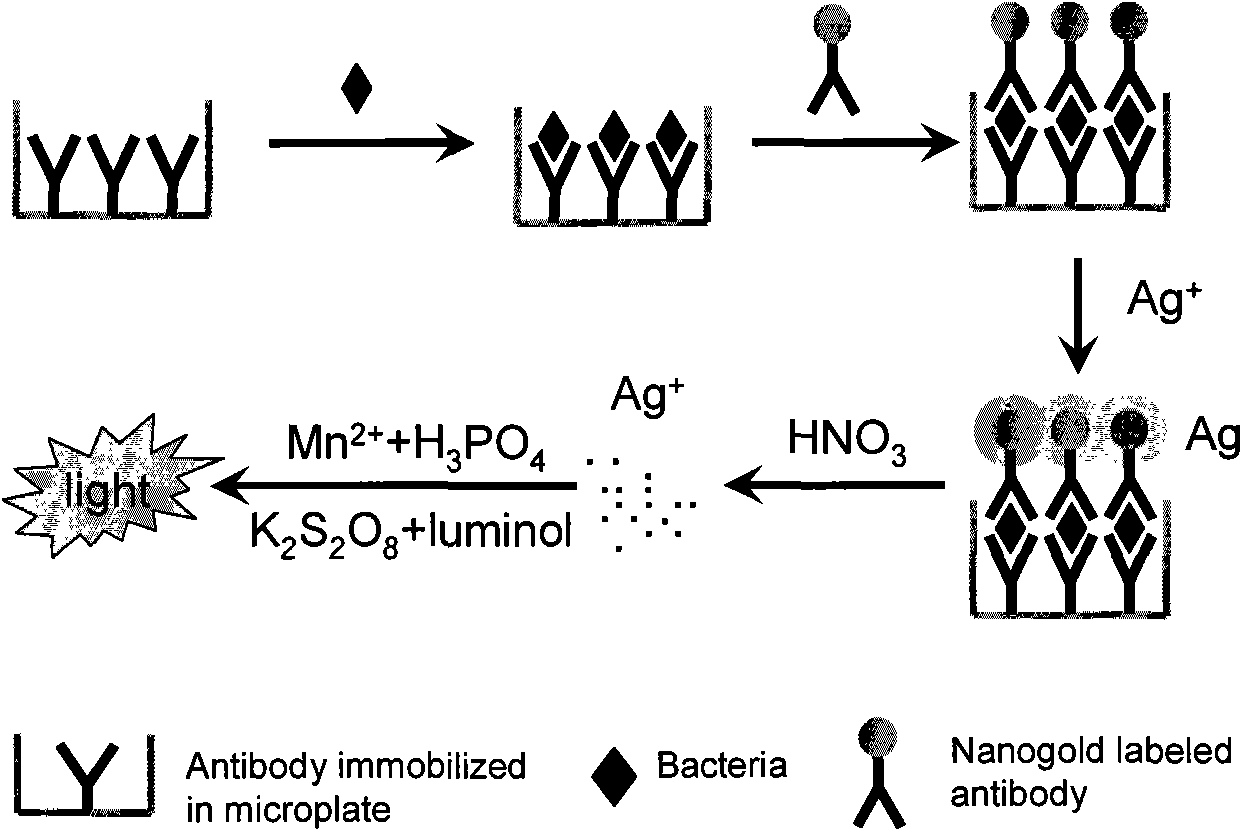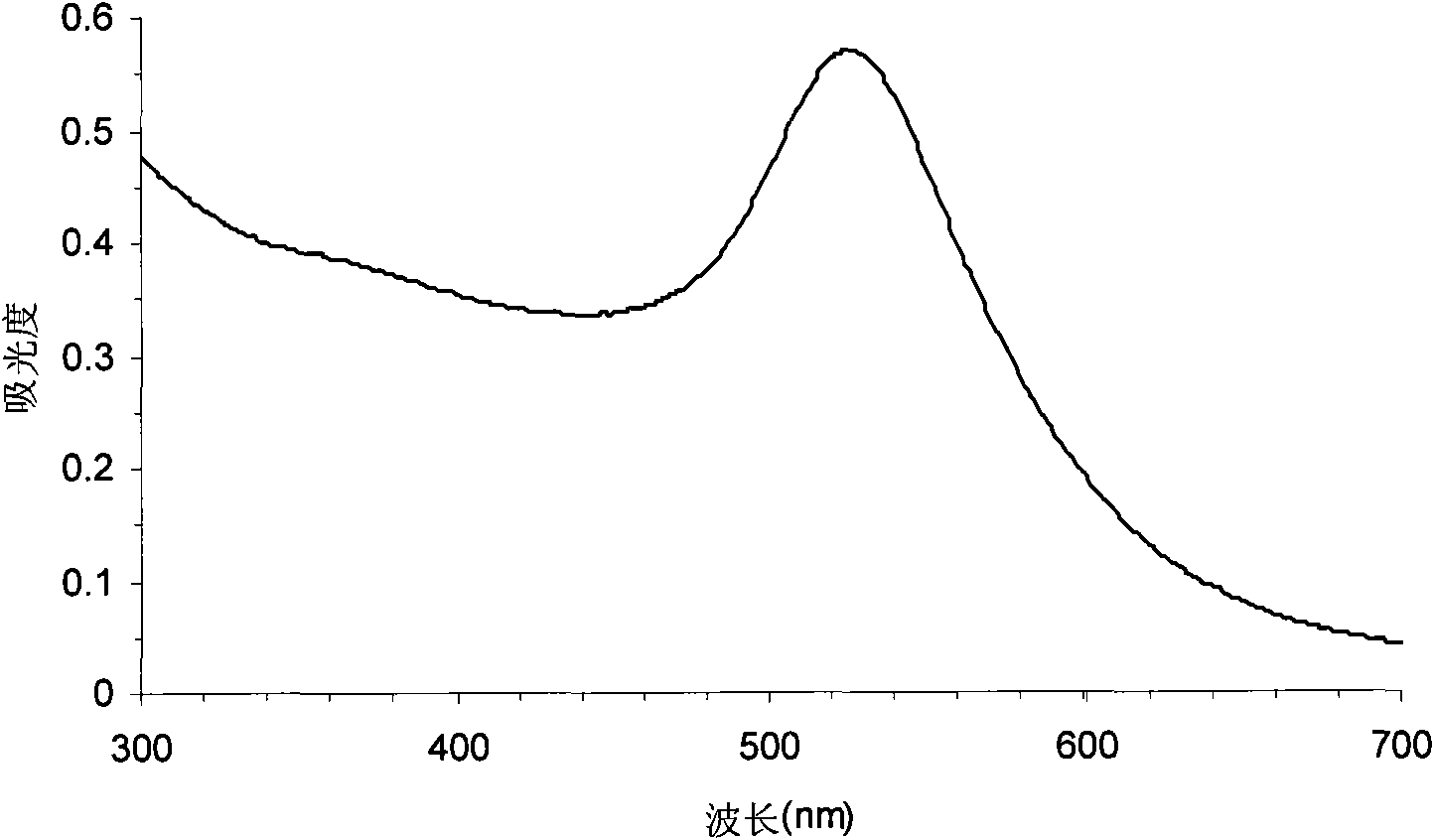Method for detecting Salmonella on basis of technique for amplifying nanogold-labeled and silver-enhanced signals
A Salmonella, signal-enhancing technology, applied in the field of sandwich complexes, can solve the problems of operating procedures, unsatisfactory specific detection of detection time, time-consuming and laborious, difficult to promote, etc.
- Summary
- Abstract
- Description
- Claims
- Application Information
AI Technical Summary
Problems solved by technology
Method used
Image
Examples
example 1
[0055] 1 material
[0056] 1.1 Instrument
[0057] Multiskan MK3 Microplate Reader (Thermo Company, USA), DF-101S Collective Magnetic Heating Stirrer (Yuhua Instrument Factory, Gongyi City, Henan Province), TU-1900 UV-Vis Spectrophotometer (Beijing Puxi General Instrument Co., Ltd.) , TecnaiG220 transmission electron microscope (TEM) (US FEI company), LH586-2 constant temperature water tank (Shanghai Jingke Industrial Co., Ltd.), 5804R high-speed refrigerated centrifuge (Shanghai Anting Scientific Instrument Factory), 96 microplate (Canada BBI company) ).
[0058] 1.2 Reagents and samples
[0059] Bovine serum albumin (BSA) (Beijing Dingguo Bioengineering Co., Ltd.), chloroauric acid (HAuCl 4 ) (Shanghai Jiuyue Chemical Co., Ltd.), hydroquinone, silver nitrate, phosphoric acid (China Pharmaceutical Shanghai Chemical Reagent Company), avidin (product of Amresco, USA), and ultrapure water were prepared by Milli-Q system.
[0060] Oligonucleotide sequences were purchased from...
example 2
[0085] 1 Reagents and materials
[0086] Mouse anti-Salmonella polyclonal antibody was purchased from Shanghai Sangong. Nanogold and mouse anti-Salmonella polyclonal antibody-nanogold complex were prepared and synthesized in our laboratory. The Salmonella strains used and other related strains are preserved in this laboratory. The tested food samples were purchased from 6 different local farmers' markets. Other reagent materials used, apparatus and equipment are identical with example 1.
[0087] 2 methods
[0088] 2.1 Operation steps
[0089] Add 100 μL of target bacteria to the microplate wells coated with mouse anti-Salmonella polyclonal antibody, incubate at 37°C for 20 min, and then wash with PBST vigorously for 3 times to remove unbound bacteria. Then add 100 μL mouse anti-Salmonella polyclonal antibody-nanogold complex to each well, incubate at room temperature for 20 min, and then wash with PBST vigorously for 3 times to remove unbound antibody-nanogold complex. ...
PUM
 Login to View More
Login to View More Abstract
Description
Claims
Application Information
 Login to View More
Login to View More - R&D
- Intellectual Property
- Life Sciences
- Materials
- Tech Scout
- Unparalleled Data Quality
- Higher Quality Content
- 60% Fewer Hallucinations
Browse by: Latest US Patents, China's latest patents, Technical Efficacy Thesaurus, Application Domain, Technology Topic, Popular Technical Reports.
© 2025 PatSnap. All rights reserved.Legal|Privacy policy|Modern Slavery Act Transparency Statement|Sitemap|About US| Contact US: help@patsnap.com



